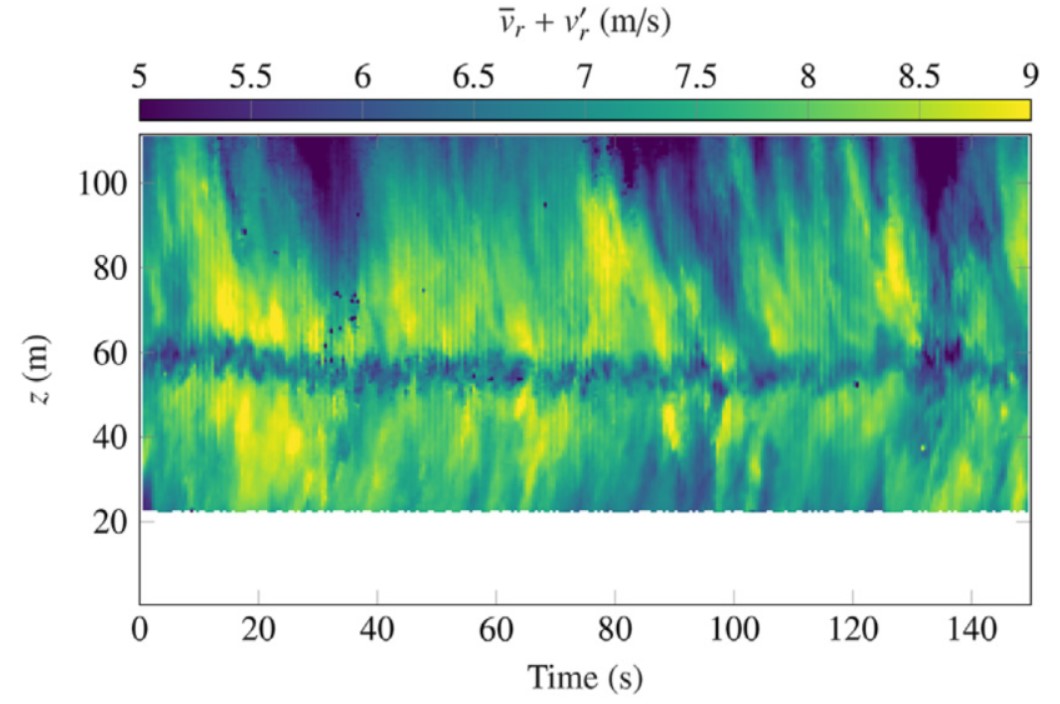Bluff body aerodynamic
An improved understanding of the interaction between the bridge structure and the turbulent flow around the deck may be achieved using anemometers and pressure sensors around the girder but also lidar remote sensing technology. Go back In 2014, the dual short-range lidar system deployed on the Lysefjord Bridge was used to characterize the wake of the bridge box girder in full-scale. The intermittent, broad-banded vortex shedding process was observed (Fig. 1) and the drag coefficient, deduced from the mean velocity deficit, was found to be comparable to the value available from wind tunnel tests.
In 2014, the dual short-range lidar system deployed on the Lysefjord Bridge was used to characterize the wake of the bridge box girder in full-scale.
The intermittent, broad-banded vortex shedding process was observed (Fig. 1) and the drag coefficient,
deduced from the mean velocity deficit, was found to be comparable to the value available from wind tunnel tests.
